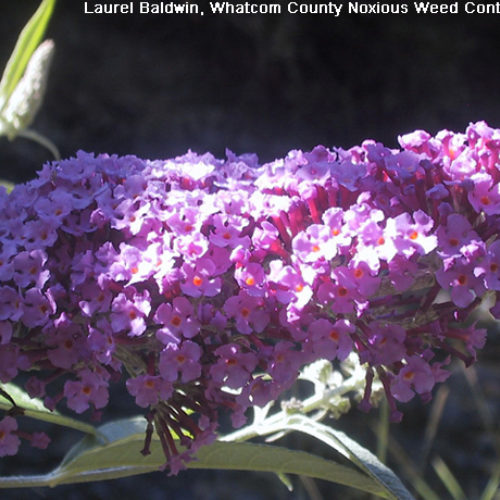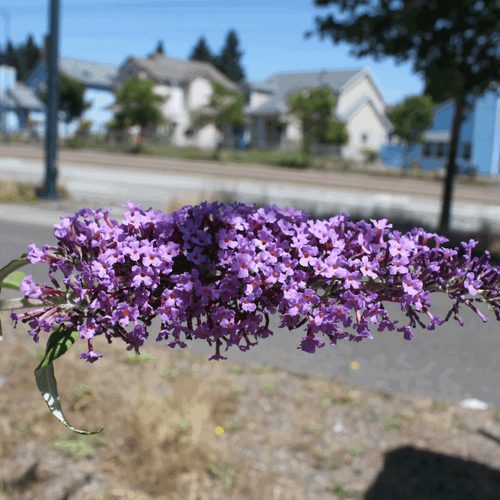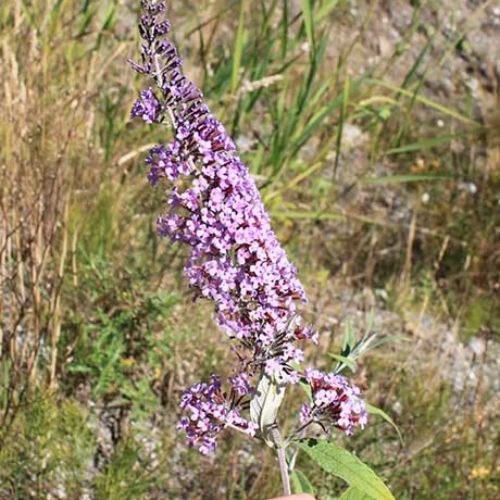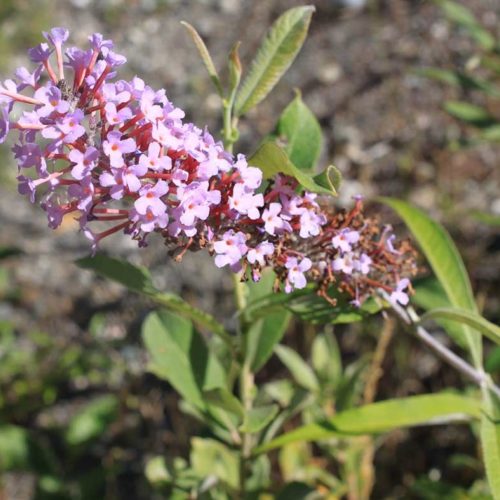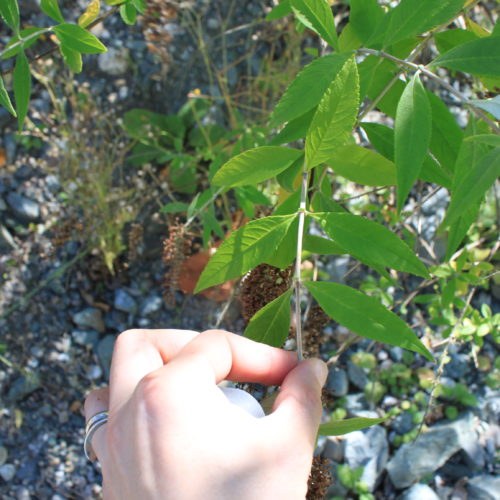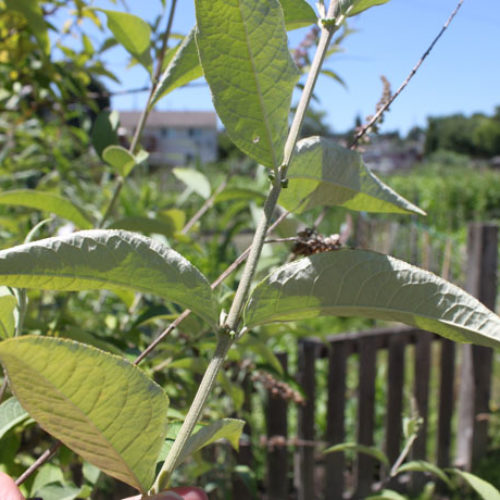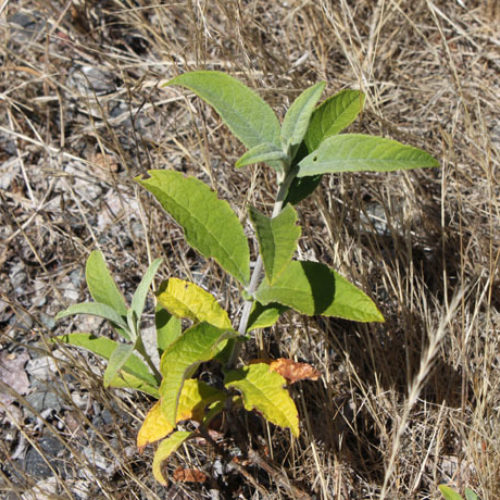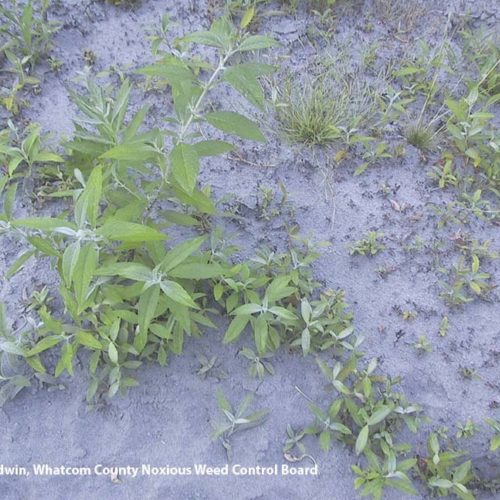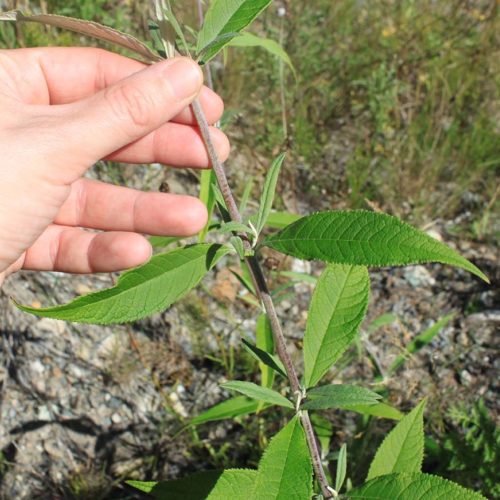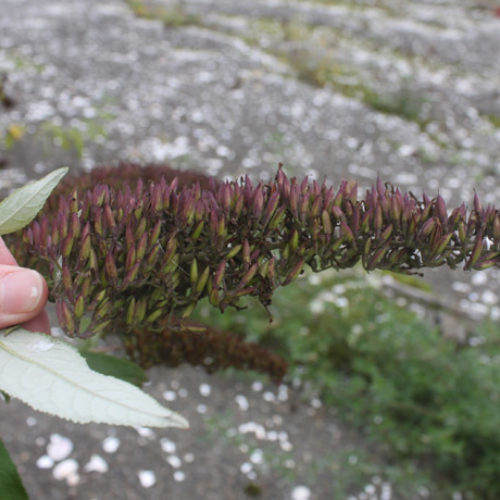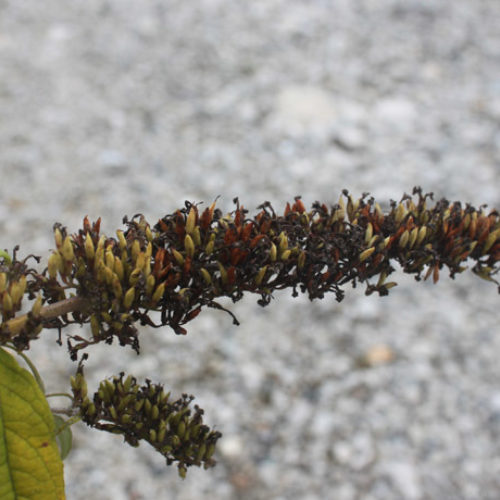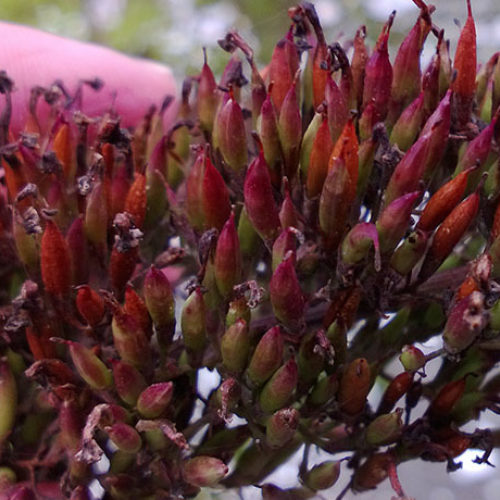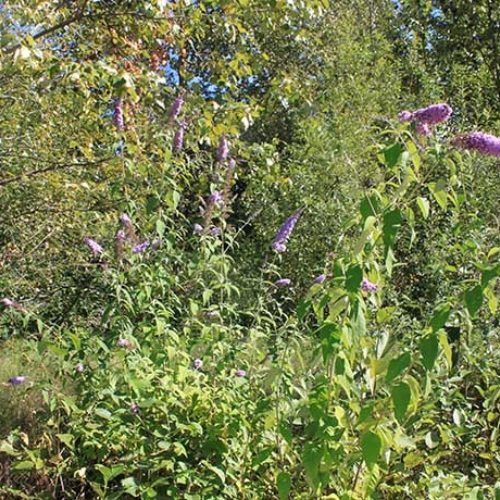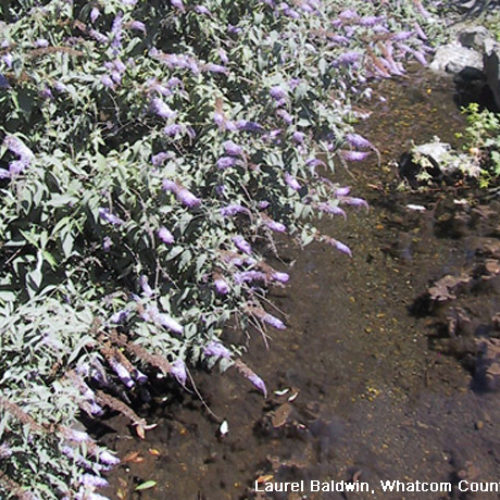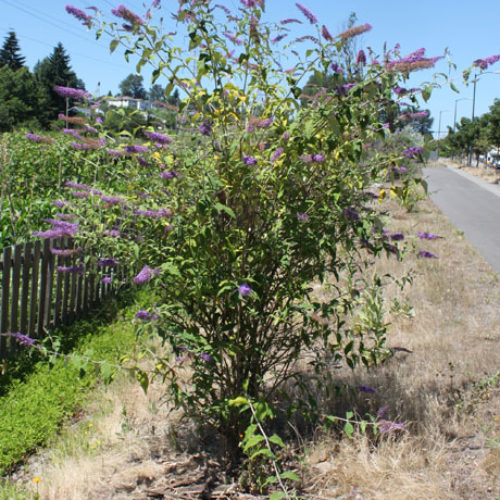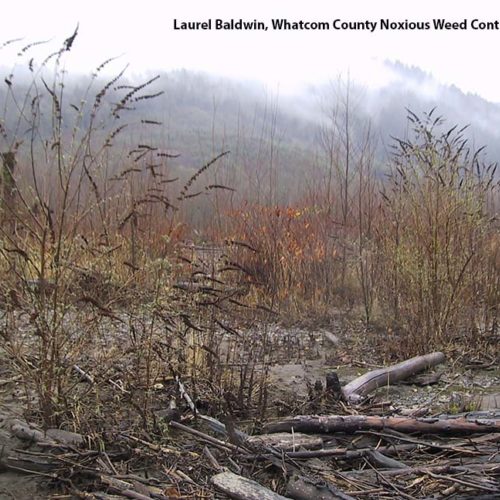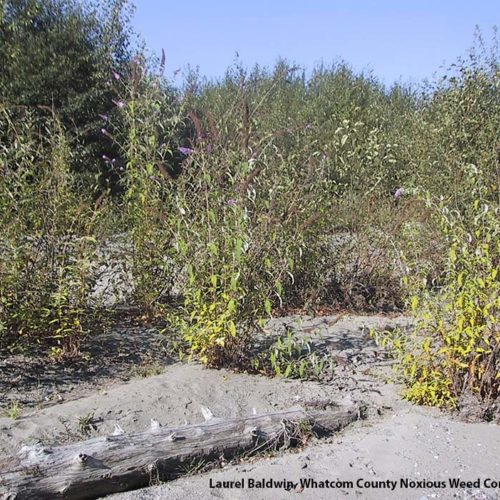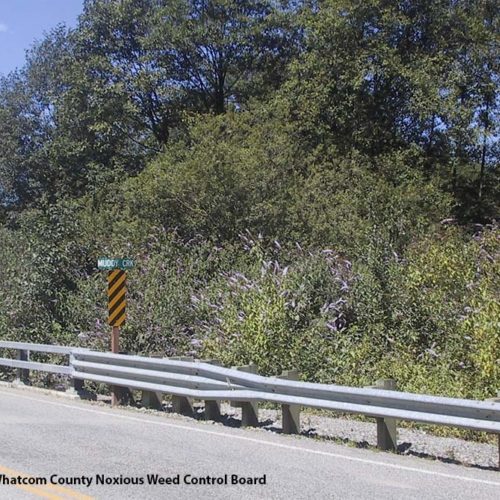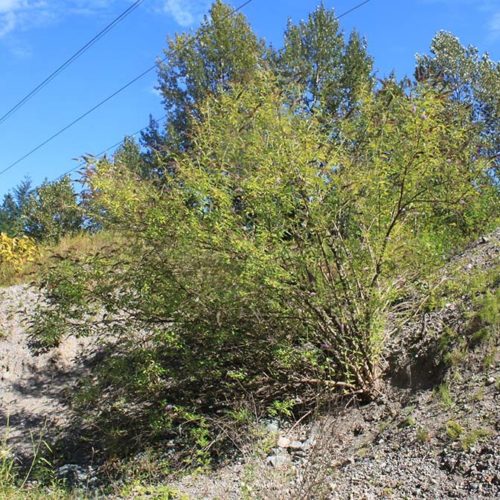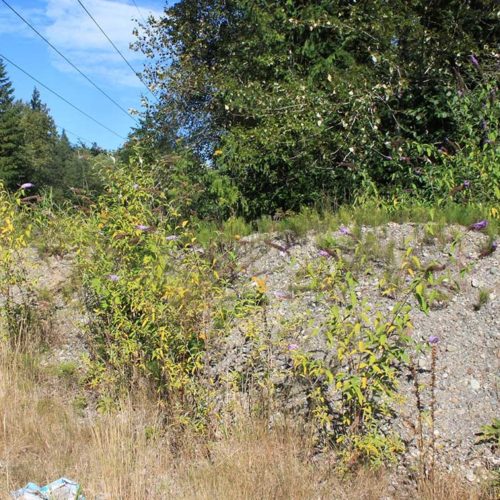Butterfly Bush
Buddleja davidii
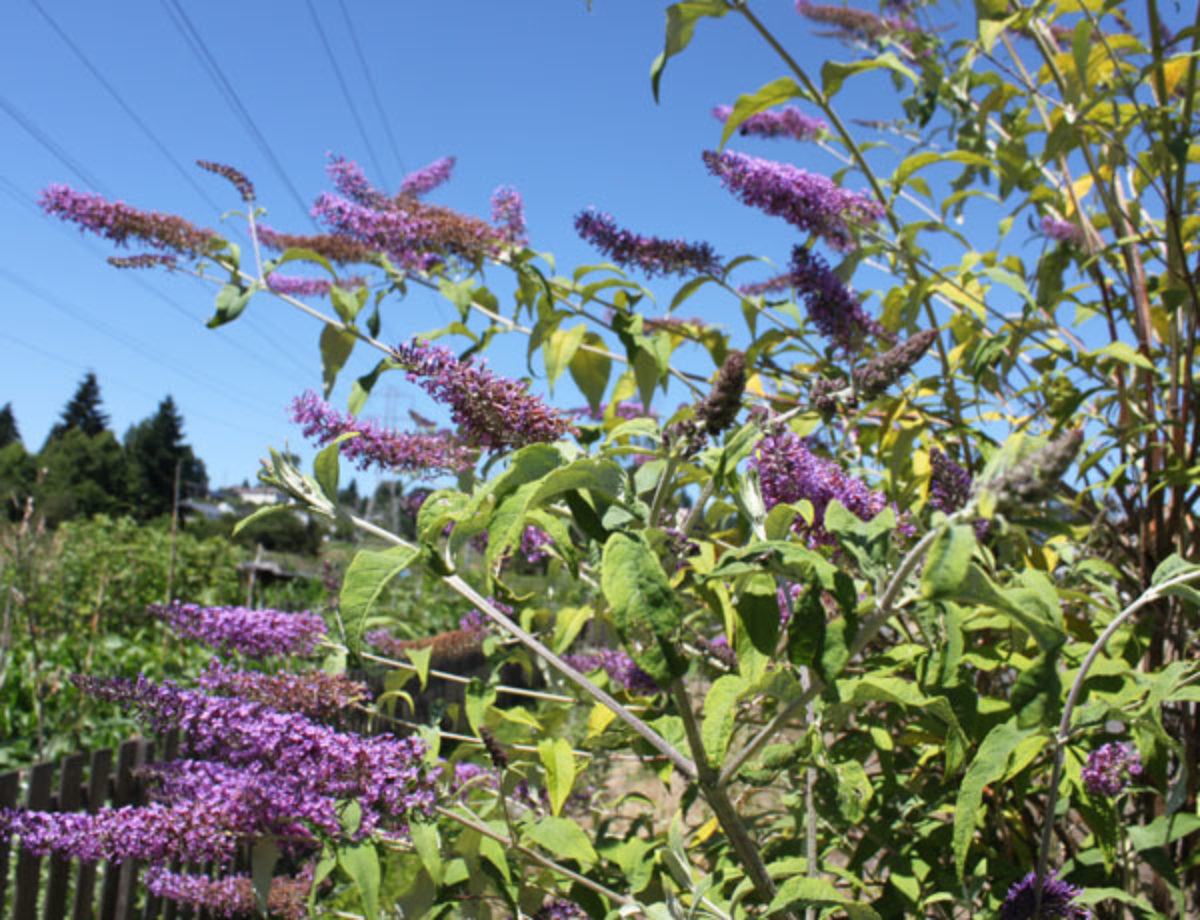
Family: Buddlejaceae
Other Common Names: summer lilac, orange eye; genus also spelled Buddleia
Weed class: B
Year Listed: 2005
Native to: China
Is this Weed Toxic?:
not known to be
Legal listings:
WAC 16-752, WSDA Quarantine list (prohibited plant list), except sterile cultivars. Buddleja davidii (butterfly bush) is a quarantined species, except for ‘accepted sterile cultivars’, defined as those that produce less than 2% viable seed. Sterile cultivars are increasingly available in the nursery trade due to a similar quarantine established by the Oregon Department of Agriculture in 2011. Listing this species on WSDA's quarantine brings parity to nursery sales between the two states.
- The Oregon Department of Agriculture's list of accepted cultivars is found here.
- Germination testing results or recognized horticultural references will also be accepted as evidence of sterility. Please contact nursery@agr.wa.gov for approval.
- Interspecies crosses where Buddleja davidii is one parent are not quarantined or regulated.
- If a plant for sale is labeled ‘butterfly bush’, WSDA inspectors will assume it is Buddleja davidii and regulate accordingly, until evidence of species is presented.
- For questions about the quarantine list, contact the Washington State Department of Agriculture's Plant Services Program at (360) 902-1874 or email PlantServices@agr.wa.gov.
Why Is It a Noxious Weed?
It forms dense thickets, especially along river banks and gravel bars, which crowd out native plants and may alter soil nutrient concentrations. This shrub is difficult to control, can produce seeds during its first year and seeds are viable 3 to 5 years.
How would I identify it?
General Description
Butterfly bush is a deciduous shrub with arching branches that can reach 15 feet in height. The showy flower spikes are often purple, and the leaves and stems are typically hairy.
Flower Description
Flowers have 4 petals, and are commonly purple with an orange center, but cultivars can be pink, orange, and white. Flower spikes are upright or nodding, reaching a length between 4 to 10 inches. They are fragrant and blooming begins in mid-summer.
Leaf description
Leaves are opposite, lance-shaped, or egg-shaped. They are up to 10 inches long and 1 to 3 inches wide. They are green to blue-gray above and whitish below due to fuzzy hairs. Leaf have either short stalks are attached directly to the stem (sessile).
Stem description
Young stems are green. Mature stems develop scraggly, gray-brown bark that peels off.
Fruit Seed Description
Seeds are held in brown capsules and are small and winged. Plants produce copious amounts of lightweight seed that are wind dispersed. One cultivar produces an estimated 40,000 seeds per flower head.
Where does it grow?
While often planted in yards and gardens as an ornamental, butterfly bush can colonize disturbed areas including roadsides, abandoned railroad tracks, pastures, riverbanks, and recently logged forests. Please click here to see a county level distribution map of butterfly bush in Washington.
How Does it Reproduce?
Plants reproduce by seed. The germination rate of several cultivars is greater than 80%, with one cultivar producing 92% viable seed. Butterfly bush can also reproduce vegetatively, as cut stems can sprout roots and grow into new plants.
How Do I Control It?
General Control Strategy
Flower heads should be cut off before seeds form. Carefully dispose of cut branches, since they can sprout basal roots. There are many suitable alternatives for butterfly bush, please see our latest publication of Garden Wise for more information.
Mechanical Control
Seedlings can be hand-picked and adult plants can be dug up. However, butterfly bush thrives in recently disturbed areas, so be aware that these methods of removing plants may actually promote the growth of new seedlings. Deadhead flower spikes before they produce seed to prevent further spread.
Herbicide Control
Please refer to the PNW Weed Management Handbook, or contact your county noxious weed coordinator.
For More Information
See our Written Findings for more information about butterflybush (Buddleja davidii).
See our postcard for early detection information about butterfly bush.
Oregon Department of Agriculture's sterile butterfly bush cultivar testing information
Whatcom County NWCB Fact Sheet on butterfly bush
Stevens County NWCB Fact Sheet on butterfly bush
Cowlitz County NWCB Fact Sheet on butterfly bush
King County NWCB Fact Sheet on butterfly bush
Asotin County NWCB Fact Sheet on butterfly bush
Island County NWCB Fact Sheet on butterfly bush
Jefferson County NWCB Fact Sheet on butterfly bush
Control Options for butterfly bush from Whatcom County NWCB



